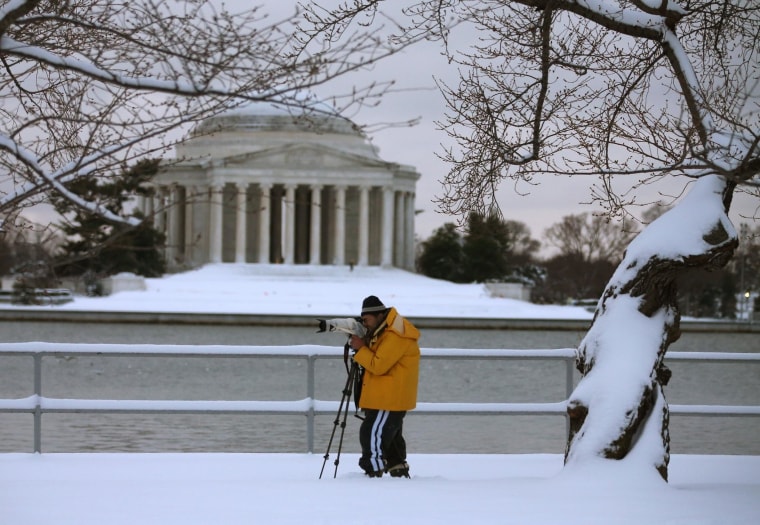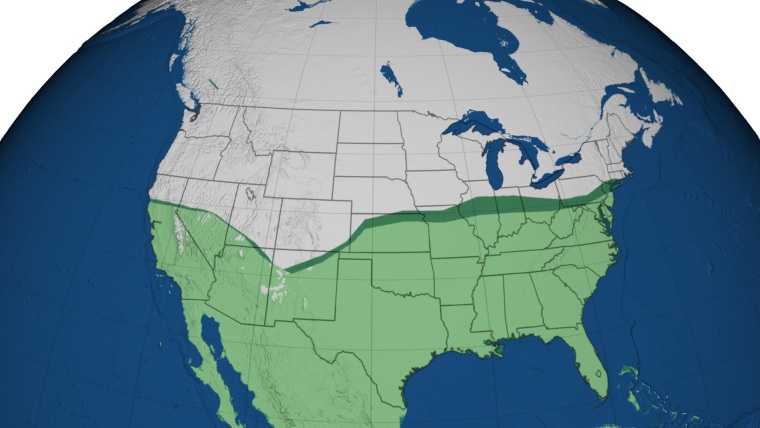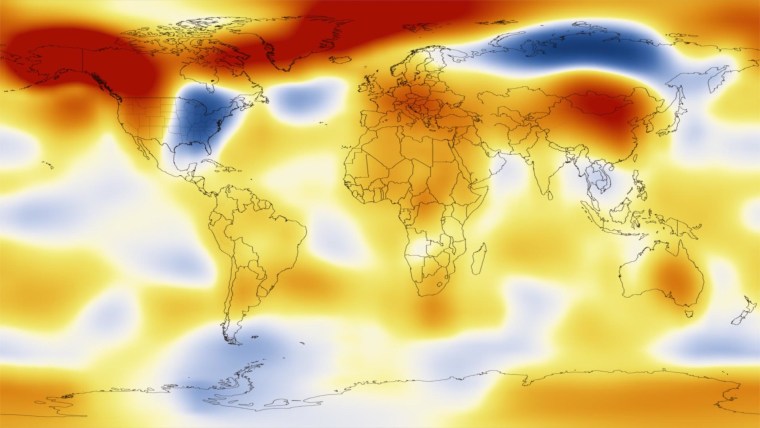Spring has sprung, astronomically speaking, but that's cold comfort to folks in the eastern U.S. who are at the tail end of one of the roughest winters in decades.
The National Park Service estimates that Washington's cherry blossoms, a traditional harbinger of spring on the East Coast, won't hit their peak until the second week of April — about a week later than the 20-year average.
If you're still shivering through the seasonal switch, consider this: Long-term temperature trends suggest that the typical signs of spring will be coming earlier due to climate change. And if you missed out on the East's Big Chill, you're probably already getting a taste of that future.
"I would bet anyone that we'll have warmer and warmer winters," Compton Tucker, a climate scientist at NASA's Goddard Space Flight Center in Maryland, told NBC News. "Three out of four winters, three out of five, will be warmer."

This winter, the eastern half of the United States was the exception that proved the rule, due to a long-lasting weather anomaly in the western half of the country. Temperatures have been warmer than the long-term average virtually everyplace else in the world. "It's actually been an above-average winter even in the United States, temperature-wise," said Michelle Thaller, a colleague of Tucker's at NASA Goddard.
That fits with the trend that climate scientists have documented over the past 60 years, relating to the first earthly signs of spring.
We're not talking about the astronomical change of seasons here. By that definition, the Northern Hemisphere's spring equinox occurs precisely at 12:57 p.m. ET. That's the time when the plane of Earth's equator passes through the center of the sun. For the next six months, the days will be longer than the nights in the north, while the nights will be longer than the days in the Southern Hemisphere.
Learn more about the astronomical reason for the season
Tucker and Thaller use a different guidepost for spring's onset: They track the date of the last frost for a given locality, and that date is coming progressively earlier. "Across the United States, we've actually seen that the date of the final frost has changed by five days [on average] since the 1950s," Thaller said.
Another way of putting it is that the extent of springlike weather on any given date has been shifting northward. By that measure, "the first day of spring has moved about 200 to 300 miles north," Tucker said.

As a result, the range of warm-weather plant and animal species is widening. Earlier this week, researchers reported that more than two-thirds of the alpine flowers in Colorado's Rocky Mountains have changed their blooming patterns in response to climate change. The scientists sifted through 39 years of records and found that the blooming season for wildflowers has become more than a month longer over that time.
That may be great for lovers of Colorado columbine, but a warmer, drier spring could mean more trouble this year for drought-hit California. "It could end up being a bad fire season because of the lack of moisture," Thaller said. "No big mystery there."
It's not all bad
Other parts of the country aren't facing such a gloomy outlook. The Midwest, for example, could be in for milder temperatures than usual this summer, said Tony Lupo, an atmospheric scientist at the University of Missouri at Columbia.
"The severe weather season won't be as big a problem," Lupo said. He also thinks it will be a good year for the farmers, with ample rainfall during the growing season.
If the weather settles into a El Niño pattern, that may ease California's drought as well — but much depends on the strength of the El Niño event.
Even in the eastern U.S., this year's signs of spring could come more quickly than winter-weary residents expect. Based on the frost-free definition, "I suspect we'll have our first day of spring probably next week," Tucker said from Maryland.
